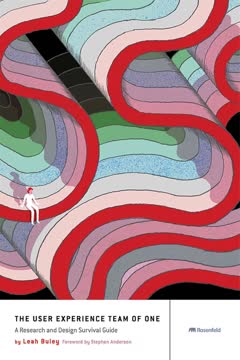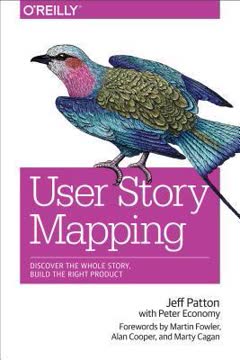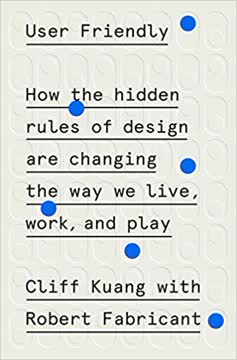Key Takeaways
1. Validate product ideas through lean user research
The best ideas look initially like bad ideas.
Challenge assumptions. Lean user research allows you to validate or invalidate product ideas quickly and cost-effectively. Instead of relying on intuition or guesswork, gather evidence directly from potential users. This approach helps you:
- Identify unmet needs and pain points
- Test hypotheses about user behavior
- Discover opportunities for innovation
By conducting research early and often, you can reduce the risk of building products nobody wants. Focus on learning fast through lightweight experiments rather than perfecting a full product upfront.
2. Understand user needs before building solutions
If I had an hour to solve a problem I'd spend 55 minutes thinking about the problem and 5 minutes thinking about solutions.
Fall in love with the problem. Too often, entrepreneurs rush to build solutions without fully understanding the underlying problem. Instead:
- Use techniques like experience sampling to uncover real user needs
- Ask open-ended questions to explore the problem space
- Look for workarounds and inefficiencies in current processes
By deeply understanding the problem, you're more likely to create solutions that truly resonate with users. Resist the urge to jump to solutions prematurely.
3. Identify and segment your target audience effectively
Everything you just read about Anna is false. I jotted it down in five minutes, and it is all based on my guesses and assumptions gathered through my own grocery shopping experiences (at least ones I can remember) and of my wife's.
Avoid assumption personas. Rather than relying on stereotypes or guesses, use research to create data-driven user personas:
- Conduct in-depth interviews with potential users
- Look for patterns in behaviors and motivations, not just demographics
- Create provisional personas, then validate with further research
Effective personas help align teams around real user needs and guide product decisions. But beware of "bullshit personas" based solely on assumptions.
4. Observe how people currently solve problems
Observation involves gathering data in the user's environment, so it is the science of contextualization.
See context in action. Direct observation provides invaluable insights into how people actually behave, not just what they say they do. When observing users:
- Pay attention to workarounds, pain points, and inefficiencies
- Note the environment and external factors influencing behavior
- Look for unarticulated needs and opportunities for improvement
Observation helps you uncover the "why" behind user actions and identify opportunities for innovation that users themselves may not recognize.
5. Test product desirability with minimal viable products
An MVP is not version 1 of the product. As a matter of fact, some MVPs are not even products.
Validate demand efficiently. Minimal Viable Products (MVPs) allow you to test core assumptions with minimal investment. Effective MVP approaches include:
- Concierge MVP: Manually deliver the product's core value
- Fake Door experiments: Gauge interest without building the product
- Wizard of Oz prototypes: Simulate functionality behind the scenes
Focus on learning, not perfection. The goal is to validate that there's a market for your solution before investing heavily in development.
6. Evaluate product usability through online testing
Simply put, if people can't use your product, they won't.
Test early and often. Online usability testing provides quick, cost-effective feedback on your product's ease of use. Key benefits include:
- Identifying usability issues before full development
- Comparing design alternatives objectively
- Gathering both qualitative and quantitative data
Use tools like UserTesting or Loop11 to run remote unmoderated tests. Aim for 5 participants for qualitative insights or 500+ for quantitative metrics.
7. Optimize findability with tree testing and first-click analysis
You can't use what you can't find.
Guide users effectively. Information architecture significantly impacts user experience. Use these techniques to improve findability:
- Tree testing: Evaluate your navigation structure without visual design
- First-click testing: Analyze where users initially click to complete tasks
- Lostness metric: Measure how efficiently users navigate your product
Improving findability reduces user frustration and increases task completion rates. Regularly test and refine your information architecture based on user behavior.
8. Continuously iterate based on user feedback and data
Research is to help inform your intuition.
Embrace experimentation. Product development is an ongoing process of learning and refinement. To continuously improve:
- Run A/B tests to compare design alternatives
- Monitor key metrics like conversion rates and engagement
- Conduct regular user research to stay aligned with evolving needs
Remember that no design is perfect. Be willing to challenge assumptions and pivot based on evidence. The goal is to create a product that truly meets user needs and delivers value.
Last updated:
FAQ
What's Validating Product Ideas: Through Lean User Research about?
- User Research Focus: The book emphasizes the importance of lean user research in validating product ideas, providing practical techniques to understand user needs and workflows.
- Target Audience: It is aimed at product managers, startup founders, designers, and researchers interested in lean methodologies, especially those with little experience in user research.
- Structured Guidance: Organized into chapters that address specific user-related questions, guiding readers through various research methods to answer those questions effectively.
Why should I read Validating Product Ideas: Through Lean User Research?
- Practical Guidance: Offers actionable steps and techniques that can be implemented immediately, making it a valuable resource for product development.
- Avoid Common Pitfalls: Helps readers avoid developing products based on assumptions rather than real user needs, preventing wasted resources.
- Empowerment Through Research: Teaches lean user research methods, enabling informed product decisions based on user insights.
What are the key takeaways of Validating Product Ideas: Through Lean User Research?
- User-Centric Approach: Stresses the importance of understanding user needs before product development, increasing chances of success.
- Lean Research Techniques: Introduces methods like experience sampling, interviewing, and observation to gather user insights efficiently.
- Iterative Learning: Promotes learning from users iteratively, allowing teams to adapt and refine products based on real feedback.
What are the best quotes from Validating Product Ideas: Through Lean User Research and what do they mean?
- “To be the man, you have to beat the man.”: Emphasizes learning through action rather than just theorizing about user research.
- “Eighty-six percent of product ideas are born from a developer’s personal pain.”: Highlights the tendency to create products based on personal experiences, which may not align with user needs.
- “Focusing on learning how people solve a problem can lead to innovative solutions.”: Underscores the value of understanding existing solutions before creating new ones.
What is lean user research as defined in Validating Product Ideas: Through Lean User Research?
- User Insights Focus: Provides insights into users, their perspectives, and their abilities to use products, delivering this information timely.
- Quick and Effective: Conducted by non-researchers to answer pressing questions about their audience quickly and effectively.
- Emphasis on Behavior: Prioritizes observed user behavior over attitudes, focusing on actions rather than words.
How does Validating Product Ideas: Through Lean User Research differ from traditional user research?
- Non-Researcher Friendly: Designed for product managers and founders without formal research training, unlike traditional user research.
- Speed and Flexibility: Techniques are quicker and more flexible, allowing rapid insights and decisions without extensive planning.
- Less Formality: Methods are adaptable and focus on practical outcomes rather than academic rigor.
What are Concierge MVP and Fake Doors experiments in Validating Product Ideas: Through Lean User Research?
- Concierge MVP Defined: Functionality is manually provided to users, testing ideas without a full product, gathering insights on preferences.
- Fake Doors Explained: Involves creating a non-existent feature to gauge user interest by measuring interactions, indicating potential demand.
- Benefits: Both methods are cost-effective, allowing rapid validation of product ideas before committing to development.
How do I choose between Concierge MVP and Fake Doors in Validating Product Ideas: Through Lean User Research?
- Concierge MVP for Exploration: Use when exploring ideas and understanding user needs without a developed product, allowing direct interaction.
- Fake Doors for Interest Testing: Opt for testing specific features or gauging interest without building anything, validating user demand assumptions.
- Consider Your Goals: Assess goals and product development stage; choose based on whether qualitative insights or quantitative data is needed.
What is the lostness metric in Validating Product Ideas: Through Lean User Research and how is it used?
- Definition: Measures how lost users feel navigating a product, with scores from 0 (not lost) to 1 (very lost), quantifying user experience.
- Calculating Lostness: Based on pages visited, optimal pages for task completion, and total pages visited, indicating navigation efficiency.
- Importance for Design: Helps identify areas where users struggle, guiding design improvements to enhance user experience and task completion.
What are some specific methods discussed in Validating Product Ideas: Through Lean User Research?
- Experience Sampling: Involves real-time reporting of experiences, providing insights into user needs and behaviors as they occur.
- Interviews: Uncover user feelings, desires, and struggles, offering a deeper understanding of the target audience.
- Observation: Watching users in their natural environment to learn about workflows and identify pain points without interference.
How can I find participants for user research as suggested in Validating Product Ideas: Through Lean User Research?
- Define Criteria: Identify target audience characteristics and transform them into measurable benchmarks for screening participants.
- Use Social Media: Leverage platforms to reach potential participants quickly and effectively.
- Craft a Screening Questionnaire: Create a questionnaire to screen participants based on established criteria, ensuring suitability for research needs.
What are the best practices for conducting user interviews according to Validating Product Ideas: Through Lean User Research?
- Prepare Thoroughly: Develop a clear plan with objectives, questions, and participant criteria to stay focused and gather meaningful insights.
- Establish Rapport: Create a comfortable environment to encourage open communication, using active listening and empathy.
- Ask Open-Ended Questions: Frame questions to elicit detailed responses, providing richer insights into user experiences and needs.
Review Summary
Validating Product Ideas receives high praise for its practical, step-by-step approach to user research. Readers appreciate its structure, focusing on key questions and corresponding research methods. The book is valued for its immediate applicability, clear explanations, and useful examples. Many find it an excellent reference guide for product development and user research. Some readers note repetition when read cover-to-cover but acknowledge its intended use as a reference. Overall, it's highly recommended for product managers, designers, and researchers, especially those new to user research.
Similar Books










Download PDF
Download EPUB
.epub digital book format is ideal for reading ebooks on phones, tablets, and e-readers.




